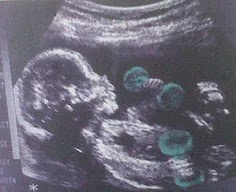I have been seeing an elderly gentleman with complex past medical
history leaving him with hemiparesis on left side of the body. However his left
lower limb is mostly affected, he has foot drop, whereas upper limb has
preserved function. The patient is able to independently mobilise indoor with wheeled zimmer frame and
with 2 walking sticks outdoor. He is unstable with walking sticks and he
experienced frequent falls in last 12 months.
First time when I met this gentleman I thought of his safety and quality
of gait. He presents with genu recurvatum in stance phase and lack of heel strike
and reduce foot clearance on swing phase. In the past he was advised to use AFO
for his left foot, however he admitted to me that he does not like it because
it is not comfortable, difficult to apply, causing him pain and he is not able
to feel the ground. Although we agreed to exchange his 2 walking stick to
3-wheeled delta frame for outdoor mobility, the problem with his left lower
limb was not solved.
After the appointment with this lovely gentleman I had dilemma; if I
should accept his willing not to use AFO and if should I introduce him other alternatives
to improve quality of his gait. Because he is 80 years old it is difficult to
change his attitude but from the other hand he is very keen on exercising.
Seeing this gentleman let me find time to dig and look for other option
which might be useful for him as well for my future patients.
There is a very good article ‘ Treatment of genu recurvatum in hemiparetic
adult patients:A systematic literature review’ from 2009.
They explain different reasons of genu recurvatum (knee extensor
weakness or spasticity, weakness of the buttock muscles, weakness or
over-extension of the hamstring muscles, limited dorsal ankle flexion as a
result of spasticity and/or retraction of the muscles in the posterior
compartment of the leg, avoidance of painful pressure on the ball of the foot
and, lastly, proprioceptive disorders) and clinical indications for the most
appropriate treatment including orthotic devices. Here you can find summary:
|
Reason of possible
genu recurvatum
|
Treatment options
|
|
knee extensor weakness- it is important for a patient to maintain
recurvatum to take steps safely, with a load line, which stays in front of
the knee, as in femoral amputees or polio victims.
|
A hinged leg orthosis may be useful for stopping the recurvatum
from worsening but the device must be adjusted so that the patient can
maintain slight recurvatum in the stance phase.
If the risk of knee unlocking is high, a rigid, full leg brace
that maintains the knee in extension may be useful for both correcting
recurvatum and countering the risk of unlocking.
|
|
knee
extensor spasticity (the impact of which is often aggravated by hamstring
weakness), genu recurvatum is present during both the swing phase
(“stiff-knee gait”) and stance phase of gait. This gait pattern is difficult
to correct. |
Botulinum toxin injections in the quadriceps were shown to improve
knee flexion in the swing phase and to reduce the energy cost of gait.
However, this improvement was not clinically obvious and did not exceed 5° of
knee flexion
|
|
significant hamstring weakness and/or overextension (as has been
described in children with cerebral palsy), concentric reinforcement of the
hamstring muscles.
|
ankle-foot orthosis (AFO) with limited plantar flexion can help the
subject to control their knee during the stance phase
|
|
buttock
muscle weakness (leading to excessive hip flexion and compensatory knee
hyperextension). |
a
combination of analytical reinforcement of the buttock muscles and functional
electrical stimulation can help the patient to change his/her gait pattern. |
|
spasticity of the posterior leg muscles or the knee extensors, it may
be useful to consider focal treatment of the spasticity.
When the spasticity is complicated by irreducible retraction of the
posterior leg muscles, two therapeutic options can be envisaged.
|
(e.g. botulinum toxin injections or selective neurotomy), as suggested
by Caillet et al
surgical extension of the muscle and tendon systems at the back of the
leg (i.e. the Achilles tendon and the toe flexors).
orthopaedic shoes, with compensation of equinus foot. When treatment
of spasticity and retraction is not possible or not sufficient, an
appropriate device (a hinged ankle-foot orthosis with limited plantar
flexion, in this case) can help the patient to progressively adopt a
different gait pattern
|
|
quadriceps weakness
|
An AFO will prevent the ankle from positioning itself in dorsal
flexion; this runs the risk of generating knee flexion on heel strike, which
may well “unlock” the flexed knee and induce a fall
|
|
painful pressure on the ball of the foot
|
spastic toe curl, which may benefit from treatment with botulinum
toxin or tendon extension. There may also be overpressure pain at the heads
of the metatarsals or pain related to hallux valgus. In both circumstances,
use of orthopaedic insoles and/or appropriate footwear can relieve the pain
|
|
major sensory disorders
|
AFO with
limited plantar flexion can help the patient to adequately position his/her
knee during the swing phase. An anti-recurvatum orthosis (such as the Swedish Knee Cage) may also be of value in proprioceptive retraining. If the proprioceptive impairment is significant, the same reasoning as in cases of quadriceps weakness can be adopted and use of a full leg brace with free or locked flexion may be considered. |
Although, there are different types of foot splints it is important to consider
its effectiveness and comfort.
Here are evidence why foot splints work.





No comments:
Post a Comment